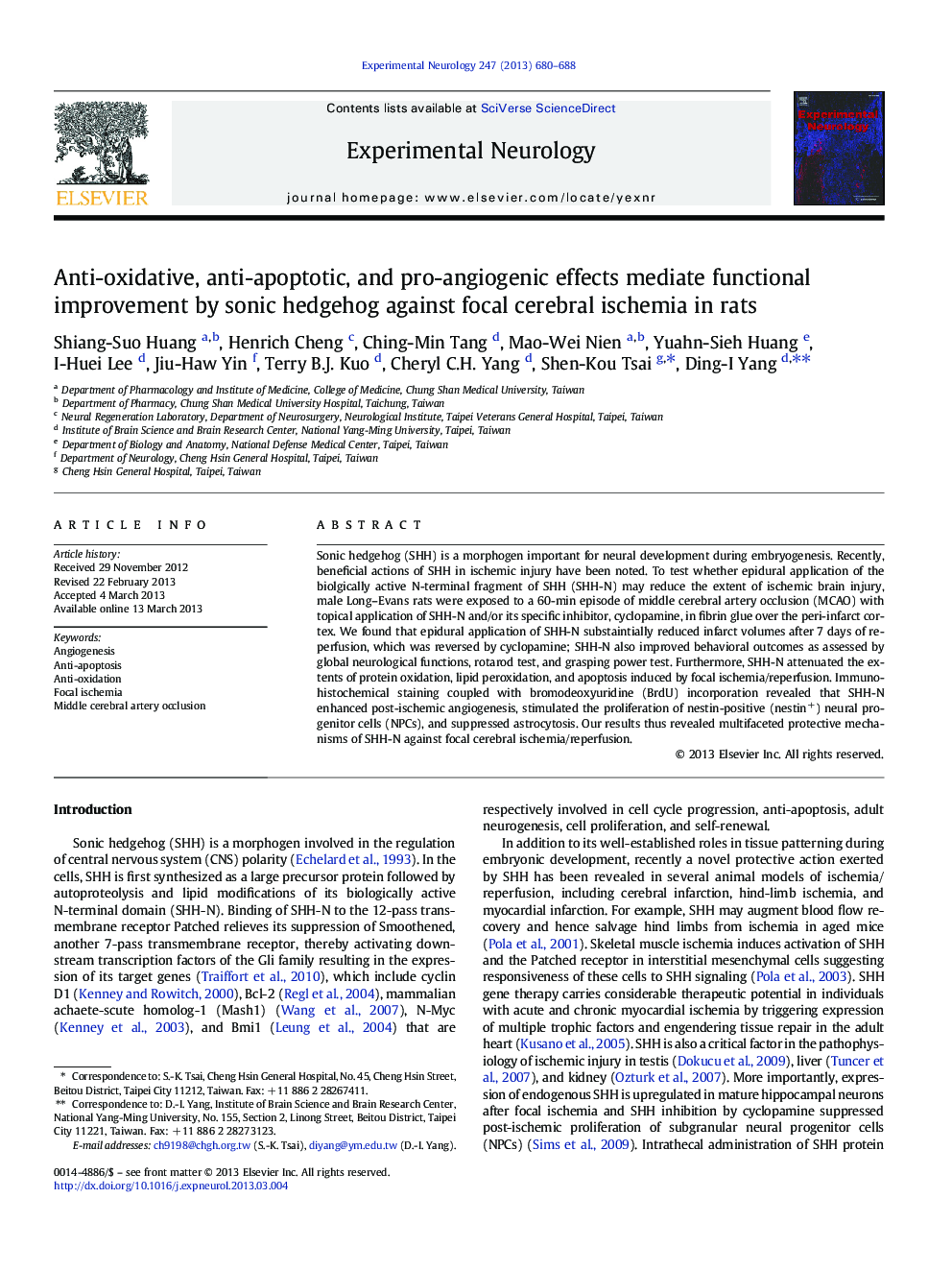| Article ID | Journal | Published Year | Pages | File Type |
|---|---|---|---|---|
| 6018380 | Experimental Neurology | 2013 | 9 Pages |
Abstract
Sonic hedgehog (SHH) is a morphogen important for neural development during embryogenesis. Recently, beneficial actions of SHH in ischemic injury have been noted. To test whether epidural application of the biolgically active N-terminal fragment of SHH (SHH-N) may reduce the extent of ischemic brain injury, male Long-Evans rats were exposed to a 60-min episode of middle cerebral artery occlusion (MCAO) with topical application of SHH-N and/or its specific inhibitor, cyclopamine, in fibrin glue over the peri-infarct cortex. We found that epidural application of SHH-N substaintially reduced infarct volumes after 7Â days of reperfusion, which was reversed by cyclopamine; SHH-N also improved behavioral outcomes as assessed by global neurological functions, rotarod test, and grasping power test. Furthermore, SHH-N attenuated the extents of protein oxidation, lipid peroxidation, and apoptosis induced by focal ischemia/reperfusion. Immunohistochemical staining coupled with bromodeoxyuridine (BrdU) incorporation revealed that SHH-N enhanced post-ischemic angiogenesis, stimulated the proliferation of nestin-positive (nestin+) neural progenitor cells (NPCs), and suppressed astrocytosis. Our results thus revealed multifaceted protective mechanisms of SHH-N against focal cerebral ischemia/reperfusion.
Related Topics
Life Sciences
Neuroscience
Neurology
Authors
Shiang-Suo Huang, Henrich Cheng, Ching-Min Tang, Mao-Wei Nien, Yuahn-Sieh Huang, I-Huei Lee, Jiu-Haw Yin, Terry B.J. Kuo, Cheryl C.H. Yang, Shen-Kou Tsai, Ding-I Yang,
